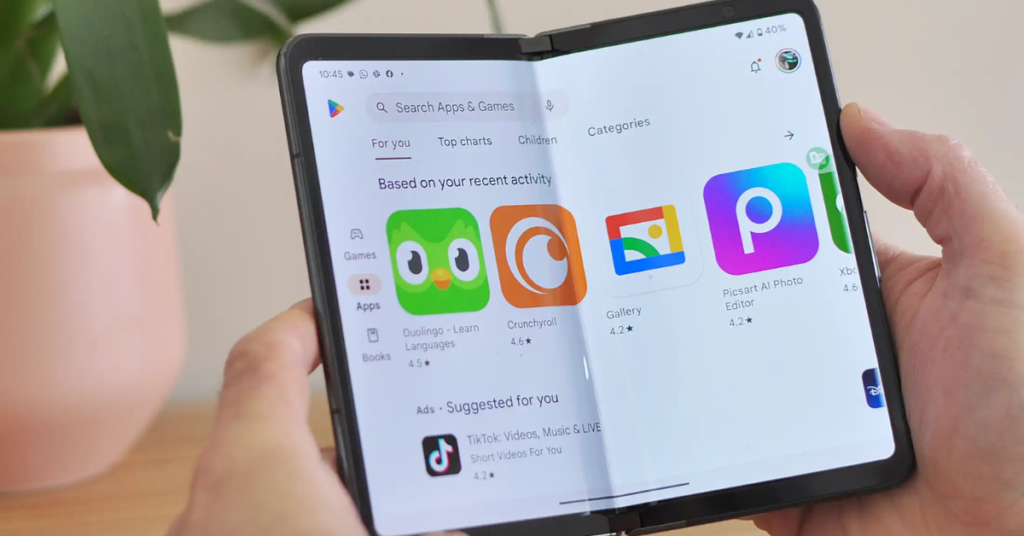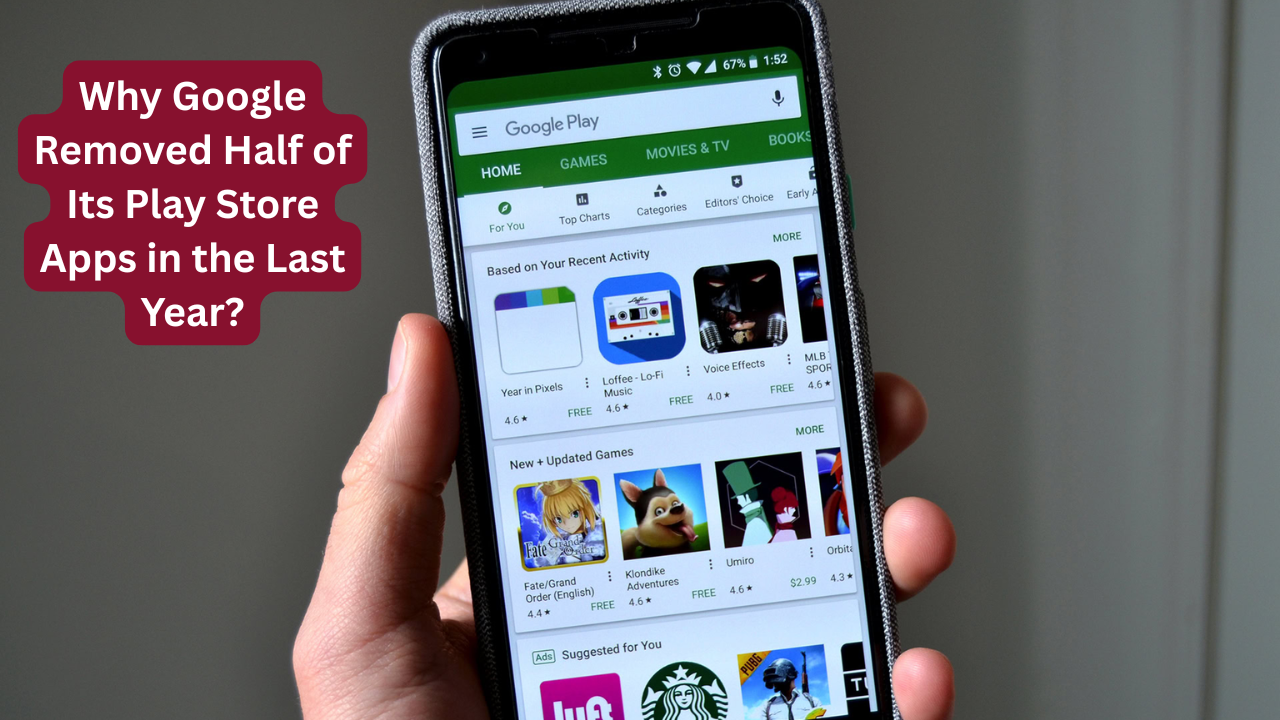If you’ve ever searched the Google Play Store for an app, you know just how overwhelming the choices can be. From games to utilities, productivity tools to social media apps, the selection seems endless. However, for Android users, the landscape of the Play Store has undergone significant changes over the past year.
As of early 2024, the total number of apps on the Google Play Store has decreased from approximately 3.4 million to around 1.8 million. That’s a drastic 47% decrease in just one year, meaning nearly half of the apps that once filled the Play Store have been removed. While this might seem like a massive loss to some, the truth behind this sudden shrinkage reveals more about Google’s efforts to improve the quality of its platform.
Interestingly, this isn’t a universal trend. While Google’s Play Store has seen a dramatic reduction in apps, Apple’s iOS App Store has remained relatively steady. In fact, Apple’s app count only saw a slight increase, remaining steady at around 1.64 million apps during the same period. So why has Google decided to remove so many apps, and what does this mean for Android users?
Why the Big Change?
The significant reduction in the number of apps available on Google Play wasn’t an accident or a simple coincidence. This large-scale removal is part of Google’s ongoing efforts to clean up its platform and improve the quality of apps that are available to users. Google has made several policy updates and increased its enforcement actions to ensure that only high-quality, safe, and functional apps make it onto the Play Store. Here’s a breakdown of the steps Google has taken that contributed to the massive decrease:
Stricter Quality Standards
One of the main reasons for the reduction is Google’s focus on improving the quality of apps. In previous years, the Play Store became crowded with low-quality and non-functional apps. Many of these apps were not useful, were poorly designed, or didn’t work as promised. Google decided to take action and raise the bar for developers. The company introduced new quality standards and removed thousands of low-value apps that added little to no value to users.
This wasn’t just about fixing broken apps, but also about eliminating those of poor quality or redundancy. The goal is to create a more curated, higher-quality app marketplace where users can find apps that work well and serve their needs.
Tougher Developer Checks
Another key factor behind the app removal process is Google’s tougher stance on developers. New developers are now subject to stricter verification steps and mandatory testing before they can upload their apps to the Play Store. This means developers now have to undergo a more rigorous process to demonstrate that their apps are functional and safe before they are allowed onto the platform.
Additionally, Google has implemented checks that monitor and track the behavior of developers and their apps, ensuring that no apps engage in shady practices such as misleading advertising, ad fraud, or other policy violations.
Enhanced Human and AI Reviews
In order to make the Play Store safer and more reliable, Google has also increased its use of both human reviewers and artificial intelligence to scan apps for policy violations. In 2024 alone, Google blocked over 2.36 million apps for violating its policies. This process includes everything from scanning for malicious software to removing apps that violate Google’s advertising guidelines, user privacy policies, and more.

In addition to blocking harmful apps, Google also banned over 158,000 developer accounts. By enforcing these strict policies, Google aims to ensure that only trustworthy developers are allowed to distribute their apps on the Play Store.
New EU Regulations
There may be another reason behind the decline in apps. In early 2024, a new European Union regulation came into effect requiring developers to share their physical addresses when submitting apps. This new rule was designed to increase transparency and accountability in the digital marketplace. While this rule also applies to Apple’s App Store, it appears to have prompted more developers to pull their apps from Google Play, especially smaller developers who didn’t want to comply with the requirement. However, Apple didn’t experience a similar drop in app numbers, suggesting that other factors were at play as well.
Developer Response
It’s also worth noting that the decline in the number of apps on the Play Store began even before Google’s major policy changes were announced in mid-2023. According to Appfigures, a research firm that tracks app store data, the drop started earlier and may have been influenced by a variety of factors. These factors might include changes in developer priorities, market dynamics, and evolving user needs, all of which could have caused developers to rethink their app offerings and, in some cases, remove outdated or underperforming apps.
What Does This Mean for Android Users?
While many Android users might initially see this reduction as a loss, it could actually be a positive change. Over the years, the Play Store had become overcrowded with thousands of apps that were poorly designed or simply didn’t meet user expectations. Finding high-quality apps among the clutter was becoming more challenging, and users often had to rely on third-party sites or recommendations to find the best options.
Now, with the Play Store shrinking down to a more manageable size, users may have an easier time discovering quality apps that actually work as promised. By focusing on higher-quality apps and reducing the number of low-value ones, Google has enabled legitimate developers to stand out in a less crowded marketplace. This could lead to a more satisfying experience for users, who will no longer have to sift through countless irrelevant or problematic apps.
Additionally, the reduced number of apps doesn’t mean that fewer developers are creating for Android. In fact, Appfigures reports that the number of new apps released on the Play Store increased by about 7% year-over-year as of April 2025. This suggests that developers are still actively building for Android and that the Play Store is still a vibrant platform for app creation.
What’s Next for the Play Store?
Although Google’s cleanup efforts have been effective in removing low-quality apps, the process is ongoing. It is essential to note that the company is not yet finished with its efforts to enhance the Play Store, and the app count may continue to fluctuate as new policies and enforcement actions are implemented. However, this might be beneficial for Android users who want a safer and more reliable app marketplace.
For developers, the Play Store is becoming increasingly competitive, with stricter entry requirements. While this may initially feel restrictive, it could also lead to an overall improvement in the quality of apps on the platform. By maintaining a more curated, secure, and transparent marketplace, Google is ensuring that Android users have access to better and more reliable apps, making the Play Store a more user-friendly experience overall.

Deepak Grover is a dedicated content writer at OTE News, specializing in government affairs, public policy, and current events. With a keen eye for detail and a passion for factual reporting, he ensures readers receive accurate and insightful news. Deepak holds a degree in Political Science and has experience in research-driven journalism.
When not writing, he enjoys reading historical books, exploring hiking trails, and staying updated with global political trends. His commitment to ethical journalism makes him a trusted voice at OTE News.




